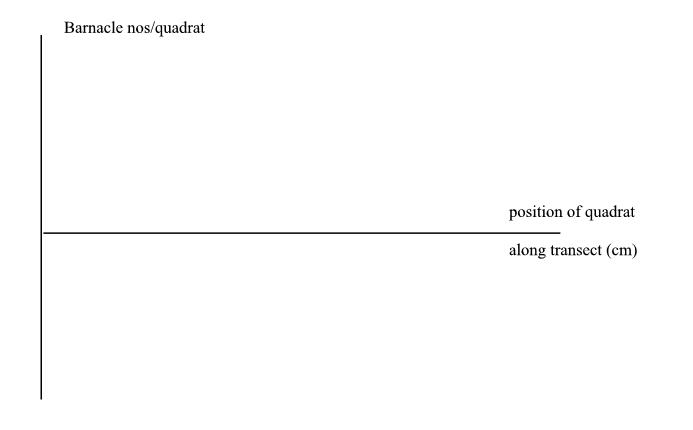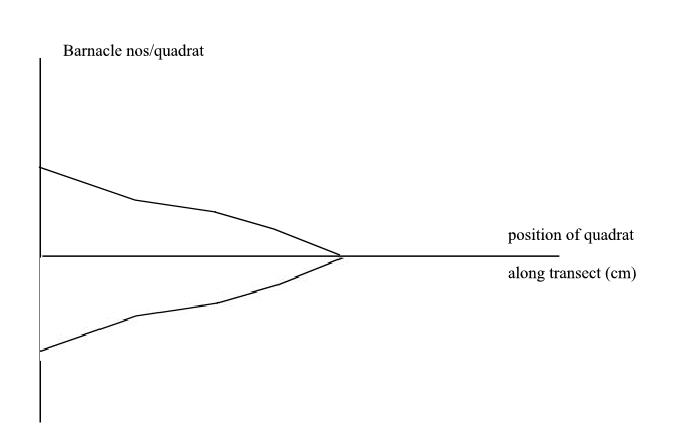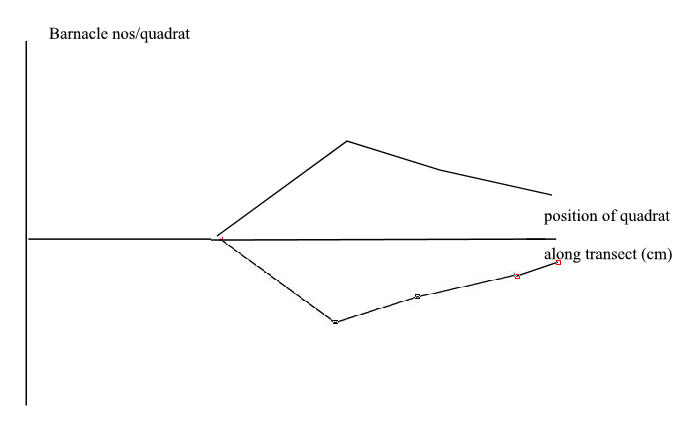Read These Instructions First !
When you have finished reading these instructions you will be taken to a page where there is a very detailed photograph of a barnacle covered rock wall, from high above low water to much lower down (about 2.5 m drop in all). On the photograph you will see a series of small squares (quadrats). Each one of these is intended to be 10cm square, but monitor differences may vary this. In the end, it is not that important what size they are as the idea is to compare the number of barnacles at each level, so, as long as they are all the same size, this will be achieved. The quadrats are placed about 10 cm apart, from the top of the rock wall to the bottom. You simply need to count how many barnacles, of each genus Chthamalus and Semibalanus, there are in each one, and record your results in a suitable table. The main difficulty here is distinguishing the two species, so there is help on that here.
The photograph is here.
When have you competed this exercise, you will have data which will allow you to make some conclusions about the distribution of these two species, but it will be much clearer to see this if you plot some sort of graph. Traditionally, for rocky shore data, the results are expressed as Kite Diagrams.
To do this, draw a set of axes like this:

Then, plot the numbers of barnacles (just one OR other species) for each quadrat along the transect, it should end up looking something like this:

The interpretation of this would be that this spoecies occurs abundantly at the beginning of the transect (top of the rock wall in our case) and progressively becomes less so as we move down.
Now this should be repated for the other species and the two kite diagrams can then be aligned, one below the other, for comparison. It should look something like this:


The positions of the two species is now easy to compare.
When you have done this, what do you conclude about the distribution of Chthamalaus and Semibalanus?
How does your answer compare with what others have found? For help with this go here.
When you have answered this, click on Interspecific Competition Page to carry on with the exercise.